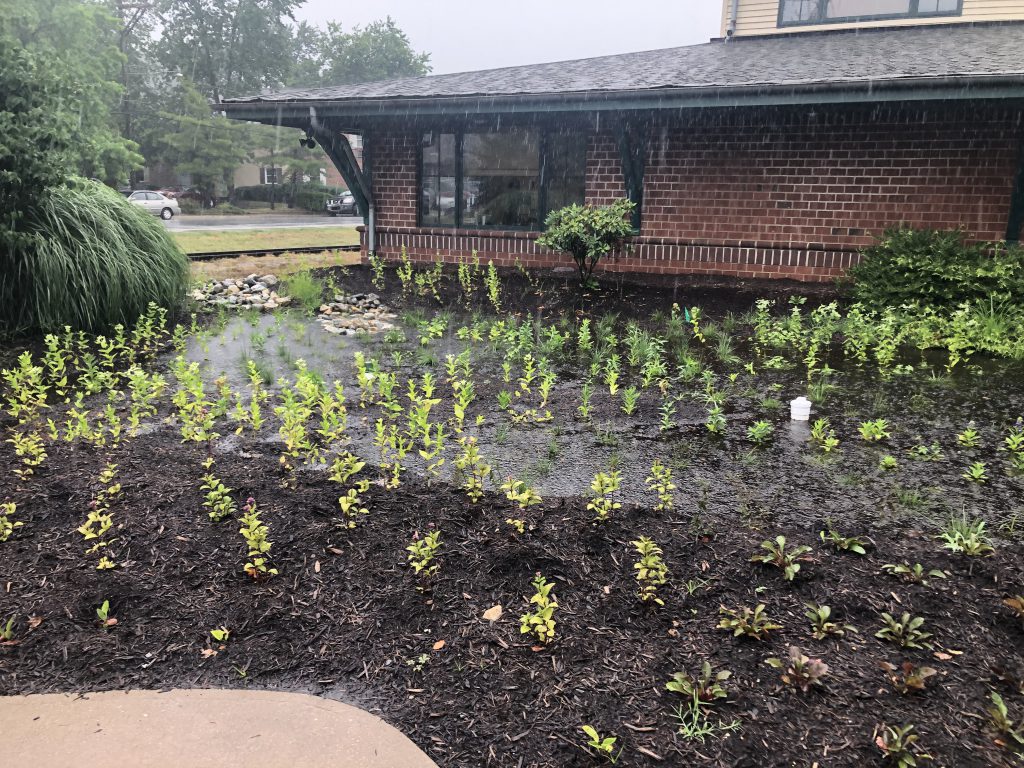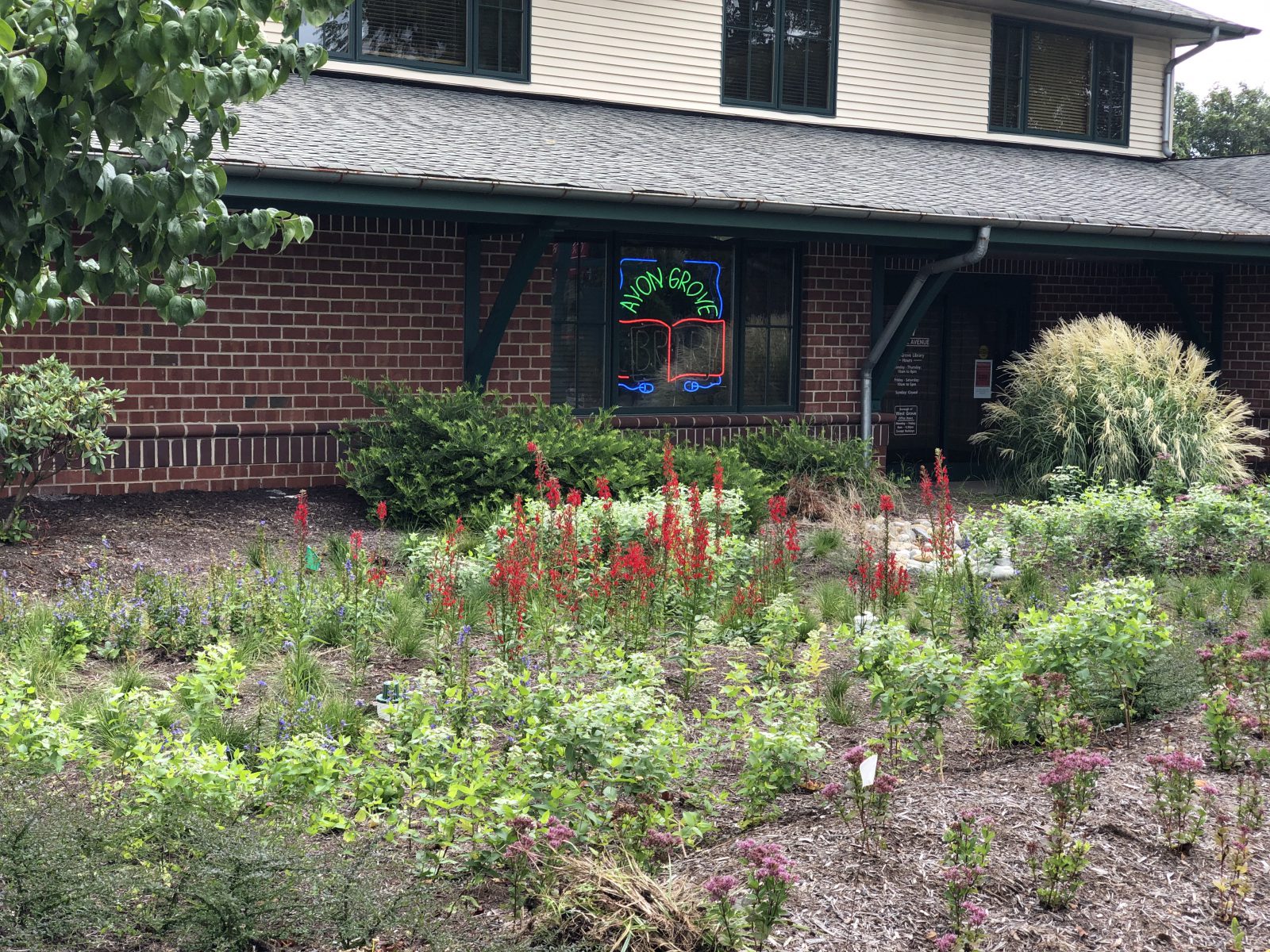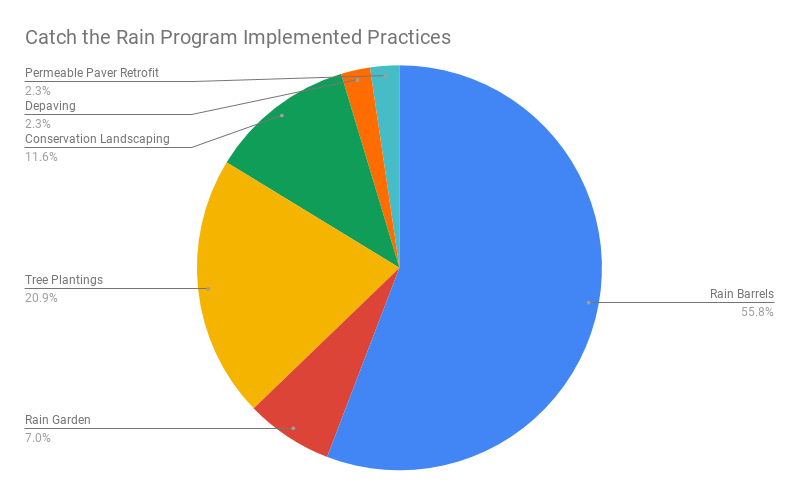Stormwater runoff is one of the main causes of pollution in the United States, yet it is not at the forefront of the minds of many. Stormwater, simply the precipitation that falls, is absorbed into the ground or falls into bodies of water. Stormwater pollution occurs when precipitation, such as rainfall, picks up harmful substances (road salts, oil, chemicals, and other debris). That polluted stormwater can run off the land and carry that pollution into waterways. This nonpoint source pollution, which doesn’t come from one specific location or origin, is difficult to regulate, yet can be a major cause of river impairment.
The White Clay, Red Clay, and Brandywine Creek are major drinking water sources, but polluted runoff from rain events makes cleaning the water for consumption incredibly costly and difficult. In a healthy stream, vegetation in riparian areas, such as forests and meadows near the riverbank, slow down rain as it gradually soaks through soils. This percolation allows pollutants to filter out while also replenishing groundwater. In developed areas, the speed and intensity of rain runoff intensify over concrete and other impervious surfaces, runoff has no time to filter out pollutants. Because stormwater is the largest source of pollution in our watersheds which are largely comprised of privately owned land, the Catch the Rain Program was born.
Catch the Rain was created in 2016, supported by the Dockstader Foundation and spearheaded by the White Clay Wild and Scenic Program and the Brandywine Conservancy. The program hopes to improve water quality by promoting Green Stormwater Infrastructure (GSI) practices. These practices are designed to capture and detain rainfall, reduce the overall stormwater speed and volume running off into the River, and stimulate the natural filtering processes of soil. The program reaches out to suburban homeowners (and homeowner associations) and educates, encourages, and provides monetary incentives for the voluntary implementation of green stormwater practices such as rain gardens and tree planting. The program also works with municipalities to install GSI practices on municipal land, practices that can also be used as demonstration sites. These GSI practices have other benefits as well, including enhanced community beauty, increased property values, improved drinking water quality, and additional habitat for birds and pollinators.
The program is currently focused in the White Clay Creek watershed, but a long term goal is to expand it to the entire Brandywine-Christina basin. A few highlights from 2020 include an 850 square feet rain garden at Paper Mill Park in New Castle County, Delaware, and another 850 sq. ft. rain garden (as seen below) located in front of the Avon Grove Public Library in West Grove Borough, a riparian (streamside) buffer planting on two acres along the Middle Branch on private land in Franklin Township, and a conservation landscape and buffer planting along 100 feet of a small stream on private lands also located in Franklin Township. Both rain gardens were installed in spring 2020 and have withstood three major storm events without any issues and with reduced stormwater runoff to White Clay Creek. Upkeep and maintenance of these gardens is a top priority to ensure long-term success.


In October, using the West Grove rain garden as a hands-on demonstration site, individuals representing multiple MS4 communities including public works staff, municipal managers, and engineers, attended a live training workshop focusing on green stormwater infrastructure. The half-day workshop was hosted by the Christina Watersheds Municipal Partnership and free of charge thanks to an environmental education grant awarded by the Pennsylvania Association of Conservation Districts. The workshop was live and also streamed virtually for those who couldn’t attend.
Since the program’s inception in October 2016, there have been 93 residential applicants and 2 municipal partners install 41 practices. The costs for these projects have totaled close to $82,000, funded through a combination of federal Wild and Scenic funds, outside funding sources such as grants, and landowners (see graph below). The program has implemented municipal rain gardens, riparian buffers, and several smaller-scale residential practices like rain barrel installations, tree plantings, and conservation landscaping. The White Clay Creek Watershed is a great example of how a developed watershed can use the voluntary actions of those who live in the area to improve water quality. Partnerships between different organizations, municipalities, and volunteers are what creates a positive difference in the health of our local watersheds.
If you or your community reside in the White Clay watershed and are interested in learning more about this cost-share program to help the environment, please contact Shane Morgan at mpc@whiteclay.org. Learn more about the Catch the Rain Rebate Program or register for a site visit at whiteclay.org/catchtherain.
These articles are provided to CWMP member municipalities by CWMP Planning Team members and partners. Publishing and posting these articles is encouraged. These articles may be republished without further permission if published as written and if credit is given to the author and their organization as listed at the end of each article. If this article is to be used in any other manner or revised, permission from the author is required.
Download pdf of article here: Catching_the_Rain_One_Drop_at_a_Time



